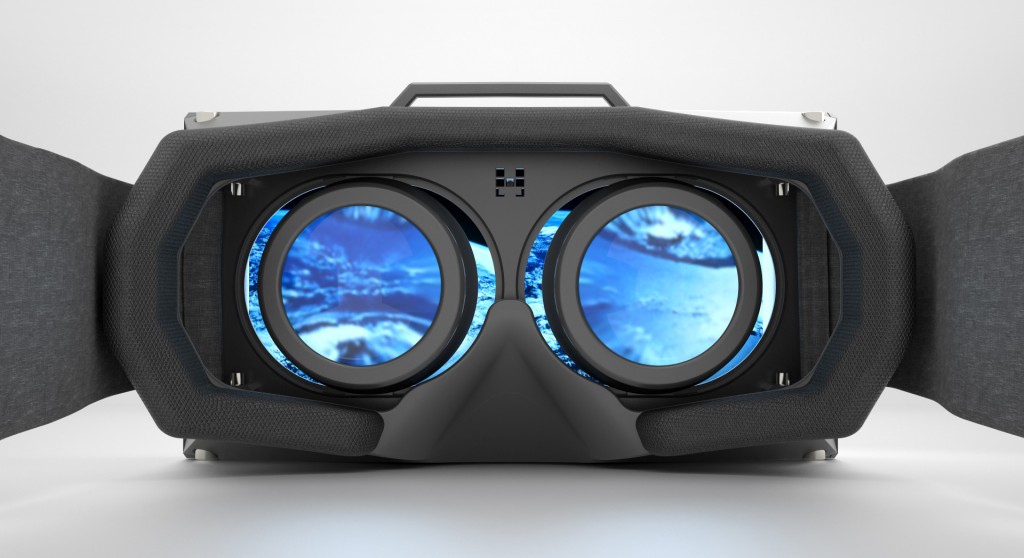

Way back in late 2013, there was a short lived, ultimately unsuccessful fan attempt to turn World of Warcraft Oculus-Rift compatible. It was canceled later by the people working on it for undisclosed reasons, and no new effort to try again has been attempted since. But the effort, as ultimately futile as it was, spoke to people’s excitement for a brave new avenue for MMOs, and video gaming in general—crossing new boundaries to engage in a virtual world more personally than ever before.
People don’t want to just play video games anymore. They want to LIVE in them. Which is why we have projects like the Oculus Rift, the Homemade “Holodeck”, and the “Game Skunk”—all attempts from fans and companies alike to bridge the gap between virtual reality and actual reality.

It’s not exactly award-winning speculative journalism to predict that new hardware will be released that will enhance and/or change how we play our games—but what that Hardware will actually allow us to do, and which ones will come to dominate gaming and which ones will simply remain peripherals is certainly something interesting to think about. But, as per usual, to really understand where we may go in the future, we have to look into the past—fortunately, we don’t have to look too far to get our ideal example this time.
Let’s look back to 8 years ago, 2006, when the Wii was released. The Wii was the first major console to really shake things up in the console market: up until that point, the console race had been a contest between companies to bring better memory, graphics and functionality to their systems. Things like controls and accessibility of cost was secondary, if it was considered at all. Nintendo, however, did things differently: it opted to create a cheap, innovative system by focusing on new controls, creating accessible family experiences, and reducing graphical fidelity to reduce the price to an extremely manageable 250 a pop. They were mocked for becoming a casual gaming device, and they laughed right along with us all the way to the bank.
Sony and Microsoft noticed. It’s no coincidence that it was after the Wii’s success that the Playstation Move and the Xbox Kinect were announced, one being a more direct copy of Nintendo than the other. They tried to simulate Nintendo’s success, and while one could argue sheer persistence on Microsoft’s part has turned the Kinect into a moderate success, the Playstation Move has by and large been forgotten and ignored by gamers and developers alike. But what mattered for the sake of this article was that success in the industry, no matter how clumsy or mocked it may be, will be emulated. Heck, that was the whole point of my previous article, “The Warcraft Effect”.
While an MMORPG is certainly expensive, making new gaming hardware can be astronomically more costly, depending on the ambition of the project. But more importantly, unlike an MMORPG, Gaming hardware is a platform where companies normally outside the world of the games industry—Google, Apple, Samsung, ect—can influence it. Either through the release of their own devices, or by contributing to the hardware of others through collaboration or patenting.
With all that in mind, what does this humble journalist think the future of the video game industry will be? Well, since this is an MMO website, let’s take a gander at some things I predict for the future of the MMO first, then we’ll take broader looks at the industry as a whole. And to do that, let’s first take a quick look at some non-gaming work.

Ready Player One. Hack//Sign. Sword Art Online. Amatsuki. Accel World. When people imagine a world with true virtual reality, it’s very rarely imagined to be a single-player, Skyrim-esk experience: rather, it’s imagined to be a world you can share with others, a ‘different reality’ where you can go on grand adventures and interact with people in ways that simply aren’t possible in the real world.
And that makes sense. Humans are social creatures by design, by and large we will always be drawn to one another in some capacity or another. Playing in a great virtual world by yourself might be appealing for some—but even then, let’s be honest, at the rate that social media is evolving there will be no “true” solitary single-player experiences anymore by the time we’re able to create a real virtual reality—but it won’t be where the money’s at. Plus, it just makes more sense for our first true VR world to be an MMO. Why?
Because of the uncanny valley. The point of the Virtual Reality is for people to lose themselves in another world—and with imperfect AI, the illusion would be pretty easily destroyed when NPC’s started repeating their lines or started clipping through a wall. Players, don’t forget, can be a cheap surrogate for AI, and in any real ambitious virtual reality, playing with actual humans will be a cheaper solution than trying to design a computer who can pass the Turning Test.
But this is all speculative. Pull back the scope and scale down to technology we have today—say someone throws together an Oculus Rift, a Gameskunk, a multi-directional treadmill and strapped two wii-motes to their arms or something and we called that the first ‘virtual reality’ system. In a more ‘realistic’ set-up, I think MMORPGs would be one of the LAST genres to make the jump to VR, namely because no matter how you slice it, MMORPGs require a lot of running, a lot of repetitive motions, and frankly, it’s nearly impossible to stay competitive when most PvP is just who can click their buttons faster. The FPS/flight sim will be the first to make the VR jump, anyone can tell you that, and I suspect sports games would follow, then more generic action RPG fare like God of War, then horror titles. Those are all just hunches, but I still think the MMO—while the most appealing kind of virtual reality—requires more refined systems than what we’ll have in the foreseeable future.

But it goes beyond that kind of hardcore experience… or at least, it has the potential too. Outside Runescape and Adventure Quest Worlds, there isn’t much of a market for the casual MMO. MMO’s are expensive to make and expensive to play, so generally you don’t see much talk of delivering an MMO experience to people who wouldn’t identify as gamers. That is going to change when/if Google Glass becomes mainstream.
Here’s the idea: when we have something as common as Google Glass, it will change how we play our mobile games. Sure, we’ll still have our Clash of Clans and Candy Crush and so forth, but we’ll also have the ability to use visual overlay to create unique gaming experiences that can be shared by anyone with a passing interest in games and a pair of google glasses on their heads. It could be as simple as an app that will sporadically summon a giant monster for you to fight in your field of view that can be seen and fought by anyone else with their own glasses with the app downloaded.
But it goes beyond that, especially if you really broaden your definition of an MMO. If social features—and the ability to communicate in-game features, feats, and share content with friends –were enough to earn a game the title of a MMO, then the future will effectively be a MMO renaissance, with Google Glass at the forefront. Consider the Streetpass feature of the 3DS—merely passing other people with their 3DS will allow for a trade of information and Mii’s, which allows them to play certain games and unlock content in others. Now imagine a similar system for Google Glass, except everyone has a pair and the effect is both immediate and visual. We could be talking about city-wide games of Hot Potato, or a spontaneous shoot-out at a bus station with our fingers as guns.
If you consider the idea of these virtual-reality overlay games becoming commonplace, it could turn the entire world—loosely speaking—into a sort of MMO. And when we have ‘casual’ gamers, a infinitely larger market than dedicated hardcore gamers, contributing to a gaming world, you can expect that world to make a lot more money and feel a lot bigger. Of course, it being the real world, it’s hard to get much bigger than that.
Moving along, in video games, we rely on sight and sound pretty much exclusively. We see things in games; we hear things in games, that pretty much sums of the experience. Our hands are preoccupied with the controller or keyboard, our tongues has the dull, numbing taste of Mountain Dew sitting on it, and we’re smelling the guy or gal sitting next to us. It’s been the dream to carry more of our senses into the way we play games for a long time now, but that’s not looking to be a very realistic prospect.
Still, efforts persist. Of the three senses not being used, it seems smell would be the easiest to translate to games. Controlling aroma through a hardware peripheral would be a complicated, expensive venture (imagine having to buy separate packs of ‘smells’ for every game you played, and needing to get refills periodically) but very much possible with our current level of technology. The problem, though, is that smelling your game is probably never going to be in especially high demand: maybe it could be used in puzzle or horror games, or even the odd RPG, but considering the cost and clumsy nature of smell I don’t see it ever becoming a must-have feature.

Taste would obviously be the most difficult, and unsurprisingly there isn’t a huge demand for people to be able to taste whatever’s in their games, except for maybe Cooking Mama and a very specific breed of Japanese visual novel. Because of that, there isn’t much/any in the way of technology to help people do that, at least in games. There has been some efforts to give people the ability to taste TV in general—for cooking shows and commercials—and that could probably be translated to gaming tech if a developer really wanted too, but… like smell, I never see it going mainstream.
Now touch, there’s something that could go places. Games have been interested with helping players feel as if they’re physically interacting with the virtual world ever since the introduction of the rumble pack, and the world outside gaming is equally interested in exploring the idea of cyber-touch… and yes, for the exact reason you’re thinking. Still, the technology could be applied in more innocent directions, if we applied ourselves to the task: and in gaming, I could see that happening. Think about it: the lack of physical feedback is an often-cited reason why motion controls don’t feel right. Touch-pads and screens are becoming more people’s primary play method. There are scores of game where the introduction of touch—from the heat of a NPC lover to the sloppy, goopy feel of a horror game’s slimy walls—would be an excellent if unnecessary addition to video games, a lot like 3D or social features like Share Play.
Plus, invaluable to porn games. No beating around the bush for that.
As far as MMO’s go, however, I’m afraid that audience is probably always going to be left wanting when it comes to this category of hardware. I can’t see a future where an MMO comes along that sells itself on the smell of the ten wild pigs you’re slaughtering to appease some local farmer. There would be way, way too many sensations for any MMORPG to realistically cater to even a portion of them, and since MMORPG’s aren’t sold on their immersion—which most of these peripherals would be in service of—it just wouldn’t be likely to ever happen.
But then I’ve been wrong about these things before.

When speculating on the future of hardware, there’s just about one thing you can be absolutely certain of—better graphics. Better loading times aren’t guaranteed, better service, better speed, and with the world running out of bandwidth we can’t even be sure there’ll be a better internet. Everything else beyond improved graphics is both speculative and entirely peripheral: an improved VR experience isn’t NESSISARY for tomorrow’s gamers, but if you don’t show people dramatically improved graphics they’re going to have no reason to want to trade their PS4 for a PS5. Remember, graphics, in the mind of the uninformed gamer, is an easy way to gauge a system’s power. Regardless of how much power it’s got under the hood if it doesn’t look good the average gamer will assume it’s weaker—which is why you can consistently see every generation of console look better than the next.
That said, while improved graphics are the safe bet, I’m going to go out on a limb and say this VR thing isn’t just a trend. While I personally don’t see the Oculus Rift as anything exceptional for anything except for FPS games, cockpit flight sims, and Five Night at Freddy’s, the very idea of a VR experience has excited enough people for me to think that the technology will continue to be developed until we reach a point where VR will be a de facto play style for a good handful of gamers.
But I never see VR ever fully replacing traditional gaming. I can’t imagine even if we were to create a perfect holodeck and we could give one to everyone free, there wouldn’t still be demand for traditional controller-based video games—much the same way traditional books remain popular even with Kindle and audiobooks on the rise. Sometimes you want to pretend you’re a great hero traversing a whole new world… and dammit, sometimes you just want to play Goldeneye with your drunk friends.
VR, while a future of gaming, is not THE future. Just another style of play.




 The Nexus Times: WildStar Hardcore Raiding Part 2 .
The Nexus Times: WildStar Hardcore Raiding Part 2 . Firefall: Powerups to Get You Through the Day
Firefall: Powerups to Get You Through the Day League of Legends: Survival Guide to the Season 6 Masteries
League of Legends: Survival Guide to the Season 6 Masteries What MMOs Learn from Non-MMOs Part 1: MMOs as a Changing Niche .
What MMOs Learn from Non-MMOs Part 1: MMOs as a Changing Niche . Beta Data: April 10, 2015 .
Beta Data: April 10, 2015 .